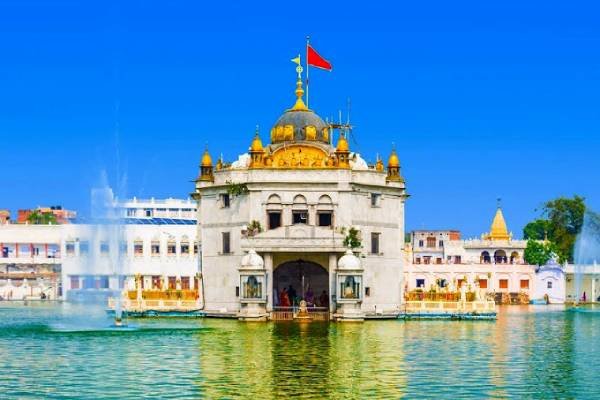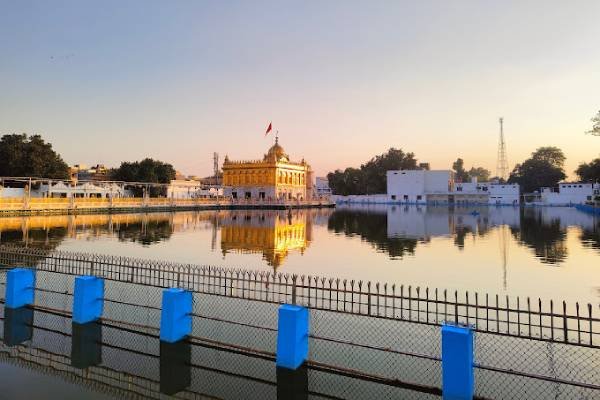The Sri Durgiana temple holds great significance for Hindus. Inside its courtyard, there’s a tree where Lava and Kusha tied up Hanuman after capturing the ceremonial horse from the Ashvamedha yajna. This land has witnessed numerous sacred ceremonies conducted by Iksvaku, the grandson of the sun-god. The original temple dates back to the 16th century, although the source of this information may be unreliable.



The architectural style of the Sri Durgiana Temple closely resembles that of the Shri Harmandir Sahib, also known as the Golden Temple. It was constructed in 1921 by Guru Harsai Mal Kapoor, following the design of the Sikh Shri Harmandir Sahib. Harsai Mal Kapoor was a descendant of Prithi Chand and hence connected to Guru Ram Das. Currently, the grandchildren of Harsai Mal Kapoor reside in Amritsar and look after the idol of Harsai Mal Kapoor.
References to the Talab (pond) can be found in documents from the 1868 Municipal Committee of Amritsar. John Campbell Oman, a professor of natural science at The Government College, Lahore, mentioned Durgiana in his book, where he observed some mystics practicing yoga. The Durgiana Mandir is documented in the Amritsar District Gazetteer of 1893, discussing Durgiana Sarovar and the “Devi dwara” (gates of the goddess) surrounding it, which were frequented by Hindu pilgrims.
Despite not being officially declared a holy city, there are rules in place prohibiting the sale of tobacco, alcohol, and meat within a 200-meter radius around both this temple and the Shri Harmandir Sahib, the Sikh Golden Temple.
